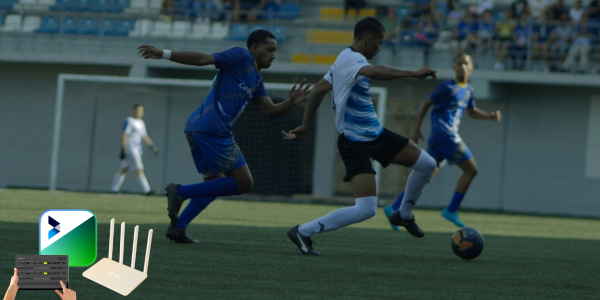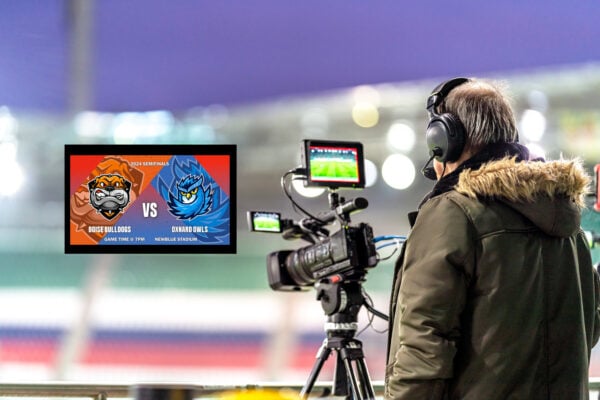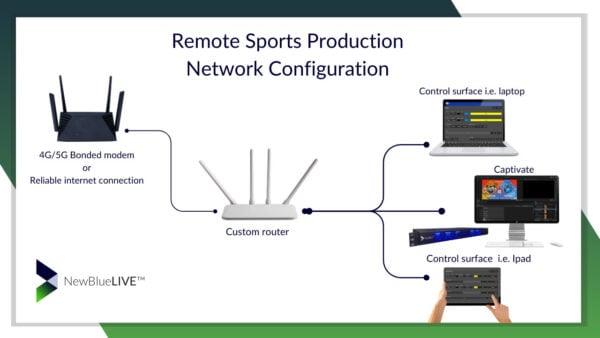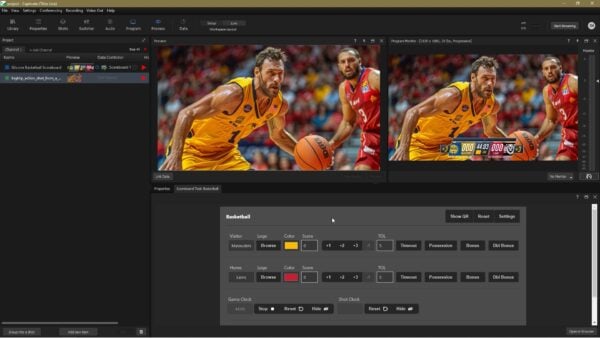
In the dynamic world of live sports broadcasting, delivering seamless, high-quality coverage from remote locations can be a logistical challenge. However, the use of 4G/5G modems, and more specifically bonded 4G/5G modems, has revolutionized how remote sports productions are managed.

These modems are invaluable when using NewBlue Captivate with our cloud-based controllers or when you need to control scoreboards from devices across various game locations. Here is a little more on the difference between just a 4G/5G modem and a bonded 4G/5G modem.
4G/5G Modems in Action
4G/5G modems provide a simple yet powerful solution by enabling crews to transmit live video from virtually any location that has 4G/5G coverage. Traditional methods, such as satellite trucks or relying solely on a single network connection, can be costly and unreliable in less accessible venues. 4G/5G modems offer a more flexible and cost-effective alternative, making them ideal for covering sports in outdoor or rural locations.

The Power of Bonded 4G/5G Modems
Bonded 4G/5G modems take this a step further by combining multiple 4G/5G networks into one robust data stream. This technology aggregates several connections from different carriers, providing higher bandwidth and redundancy, which is critical in live broadcasting. With bonded modems, if one network experiences congestion or drops out, the others seamlessly compensate to maintain uninterrupted live transmission.

Benefits for Remote Sports Production:
- Flexibility and Mobility: 4G/5G modems allow production crews to set up virtually anywhere, making it easier to cover diverse sporting events such as marathons, golf tournaments, or adventure races in remote locations.
- Cost-Effective Solution: Compared to satellite solutions, 4G/5G modems are far less expensive. The bonded approach ensures that you don’t need to rely on costly satellite uplinks, especially when 4G/5G networks are widely available.
- Reliability and Resilience: The redundancy offered by bonded 4G/5G modems ensures stable transmission even in challenging network environments. This reduces the risk of broadcast interruptions, a crucial factor for live sports.
- Low Latency: Many bonded modems are optimized for low-latency video transmission, which is critical for live sports coverage where timing and real-time interactions are essential.
In addition to video transmission, remote sports productions often require the use of multiple devices for tasks such as driving scoreboard tools, inputting statistics, and managing spreadsheets.

With NewBlue Captivate, you can use tools like Scorebird, Sportzcast, Statcrew sports controller or simply rely on the built-in Scoreboard Tool-all of which allow your team to operate seamlessly from multiple devices. To facilitate seamless communication between these devices, a stable local network is essential. A 4G/5G modem router can effectively serve this purpose, creating a reliable network environment for all connected devices.

By leveraging 4G/5G connectivity, production teams can ensure that data flows smoothly, enhancing operational efficiency and ensuring accurate, real-time updates during live broadcasts.
Miri Technologies recently released a X510 bonding router that may be worth checking out. Kiloview and Peplink also have a couple options that could enhance your workflow.
If you have a larger budget, LiveU is worth looking into. Regardless of what solution you choose, finding a bonding router may just add to piece of mind for all your sports operators to give your audience that exceptional experience you are looking for.

For more information on workflows with NewBlue Captivate, please contact sales or see our YouTube channel @NewBlueFX for our latest tutorial releases.